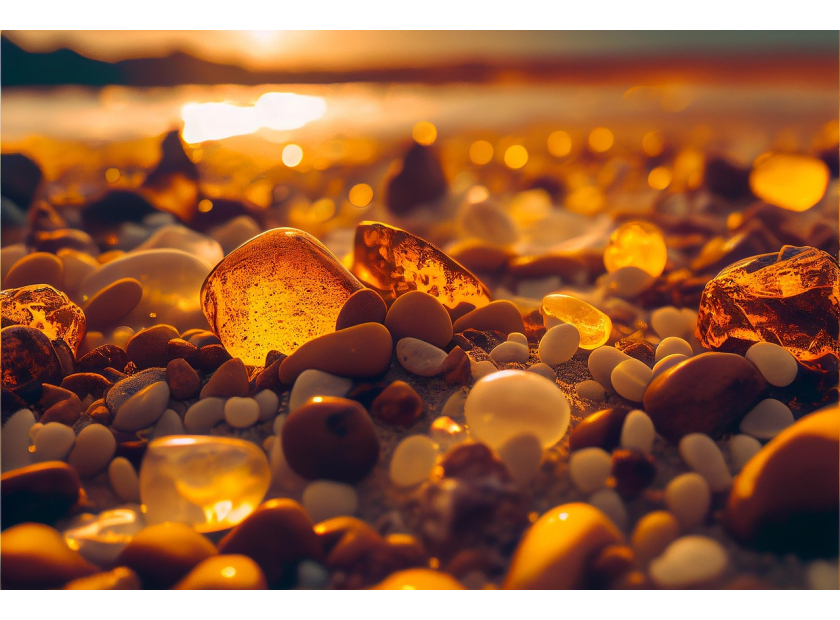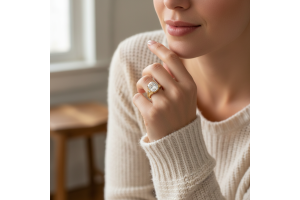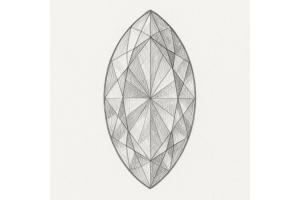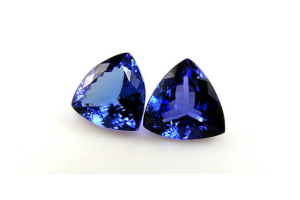USD
/
USD
/
Shipping to:
Currency:
Amber vs Copal: What’s the Difference Between These Natural Resins?
Amber and copal are both natural tree resins that have captivated people for centuries with their beauty, warmth, and distinct aromatic properties. While they may look alike at a glance, they’re quite different in age, composition, and how they’re used. Knowing the difference can help you make smarter choices when buying or collecting resin-based jewelry.
Understanding Amber
Amber is fossilized tree resin that has gone through millions of years of polymerization and natural hardening. This ancient process transforms the resin into a durable, beautiful substance often used in jewelry. Some of the most famous amber comes from the Baltic region.
Formation and Age
Amber comes from resin secreted by ancient trees, which then fossilized over millions of years. This lengthy transformation makes amber incredibly stable and gives it the ability to preserve organic materials like insects or plant matter inside.
Physical Characteristics
Amber typically ranges in color from pale gold to deep orange and even reddish-brown. It has a Mohs hardness of about 2–3, making it softer than many gemstones but still sturdy enough for everyday wear. It also gives off a pine-like scent when heated.
Common Uses
Amber has been worn and cherished for centuries. In addition to jewelry, it has been used for spiritual purposes, incense, and in folk remedies. If you’re drawn to one-of-a-kind jewelry styles, take a look at these non-traditional engagement rings for inspiration.
Understanding Copal
Copal is also a tree resin but is much younger than amber. It hasn’t had time to fossilize fully, which makes it softer and less stable. Copal is often harvested from living trees in Central and South America, as well as East Africa.
Formation and Age
Unlike amber, which is millions of years old, copal is only hundreds to thousands of years old. It's considered "sub-fossilized" — not fully hardened by time and pressure.
Physical Characteristics
Copal is typically lighter in color and has a clearer, almost glassy look. It’s much softer, with a Mohs hardness around 1.5. It can scratch easily and may even become tacky when exposed to heat or certain chemicals. Still, it gives off a lovely sweet scent when burned, which is why it’s often used in incense.
Common Uses
Copal is especially popular in spiritual and ceremonial settings, particularly in Latin American cultures. It’s also used in varnishes and traditional crafts. If you’re into meaningful stones or symbolic gifts, you might love these gemstone rings that pair well with spiritual or earthy aesthetics.
Telling Amber and Copal Apart
They might look similar at first, but amber and copal have some key differences that are easy to spot once you know what to look for.
Age and Fossilization
The biggest difference is age. Amber is millions of years old, while copal is relatively young. This affects everything from hardness to stability. Want to learn more about how stones form over time? Read this deep dive into how gemstones and diamonds are formed.
Durability
Amber is significantly more durable, making it a better choice for long-lasting jewelry. Copal, on the other hand, is more fragile and better suited for display or limited-wear items.
Solubility
If you apply a bit of alcohol or acetone, copal will become sticky or even dissolve slightly — amber won’t. This is a common test used by jewelers and collectors.
Reaction to UV Light
Under ultraviolet light, amber often fluoresces a pale blue or green, while copal may show little to no reaction at all.
Why People Confuse Them
The confusion mostly comes from their similar appearance and overlapping uses. Sometimes sellers label copal as “young amber” to make it sound more appealing, but they’re not the same — in age, value, or durability.
Knowing the difference helps ensure you’re getting exactly what you’re paying for — whether you’re shopping for incense, collectibles, or heirloom-quality jewelry.
If you’re comparing amber to other gemstone options, check out this guide on lab-grown diamonds vs. gemstones to see how amber stacks up to more modern choices.
Frequently Asked Questions
Is copal real amber?
No — while both are resins from trees, amber is fossilized and millions of years old. Copal is much younger and hasn’t gone through the same natural hardening process.
Can copal be used in jewelry?
It can, but with caution. Copal is softer and more prone to scratches and damage, so it’s not ideal for everyday wear.
Why is copal used as incense?
When burned, copal produces a sweet, rich fragrance that has been used in ceremonies and rituals for centuries, especially in Mesoamerican cultures.
How can I tell if I have amber or copal?
Try a solvent test: copal will soften or become sticky with alcohol or acetone, while amber won’t react. A UV light test can also help, as amber usually glows faintly under blacklight.
Is amber more valuable than copal?
Yes — amber tends to be more valuable due to its age, rarity, and stability. That said, copal has its own charm and is often more affordable for those looking for resin-based pieces.
Ready to explore more natural, beautiful stones in fine jewelry? Browse our stunning gemstone engagement rings or discover classic








